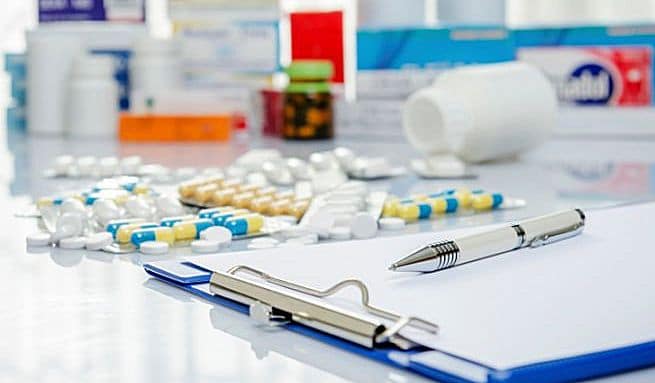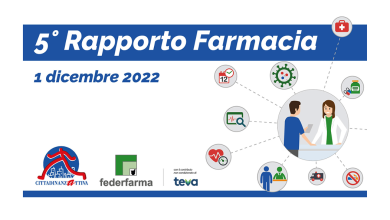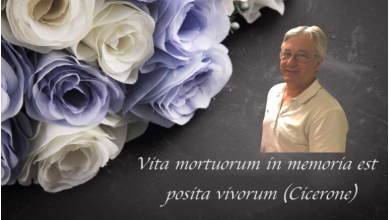
 In 2015, every citizen took an average of just over 1.8 doses of medicines a day. Total national pharmaceutical expenditure amounted to 28.9 billion euros, of which 76.3% was reimbursed by the National Health Service. Expenditure for the purchase of medicines by public health structures amounted to around 11.2 billion euros, recording an increase of +24.5% compared to 2014, mainly due to the entry of innovative medicines on the national market, in particularly those used in the treatment of hepatitis C. Cardiovascular drugs are confirmed as the category with the highest consumption, while antimicrobials rise to first place in terms of expenditure.
In 2015, every citizen took an average of just over 1.8 doses of medicines a day. Total national pharmaceutical expenditure amounted to 28.9 billion euros, of which 76.3% was reimbursed by the National Health Service. Expenditure for the purchase of medicines by public health structures amounted to around 11.2 billion euros, recording an increase of +24.5% compared to 2014, mainly due to the entry of innovative medicines on the national market, in particularly those used in the treatment of hepatitis C. Cardiovascular drugs are confirmed as the category with the highest consumption, while antimicrobials rise to first place in terms of expenditure.
These are some of the data from the 2015 Report "The use of drugs in Italy" presented today in Rome by the Italian Medicines Agency.
“The OsMed Report, now in its sixteenth edition, in addition to effectively responding to the institutional mandate of surveying and analyzing the trend of pharmaceutical expenditure and proposing a more rational and appropriate use of sector resources, has also become a mirror of the changes that have taken place and ongoing and indicator of future transformations in the pharmaceutical-health, economic and social sectors in our country” affirmed the President Melazzini.
“In order to guarantee the fundamental right to health of all citizens also in the future and in particular of those more fragile categories such as children, the elderly, the chronically ill as well as people affected by pathologies for which effective treatments have not yet been identified, it is it is essential never to forget the challenge of sustainability that we are called to fight and win every day" added the President.
"Medicine has changed its face over the years, moving from a classic approach based on a single disease to a so-called "complexity" approach, which sees the patient in its entirety." – continued Melazzini – “The pharmaceutical sector is also undergoing a progressive change which, through the new antineoplastic therapies, passing through the new antimicrobials, is moving towards increasingly personalized and, unfortunately, onerous therapies, which include both drugs with a genetic target and new production methods such as three-dimensional printing”.
 “National pharmaceutical expenditure in 2015 recorded a very significant leap forward of +8.6% compared to the previous year" – said the Director General, Luke Pani – “These are important numbers that testify quite clearly what is happening in the drug market and not only in our country. The dominant issue at an international level in the regulatory field is how to reconcile access to new drugs, sustainability and maintenance of quality and safety standards".
“National pharmaceutical expenditure in 2015 recorded a very significant leap forward of +8.6% compared to the previous year" – said the Director General, Luke Pani – “These are important numbers that testify quite clearly what is happening in the drug market and not only in our country. The dominant issue at an international level in the regulatory field is how to reconcile access to new drugs, sustainability and maintenance of quality and safety standards".
“From now to 2020” – continued the Director General in a scenario analysis based on the forecasts of IMS Health 2015 – “225 new active ingredients will arrive on the market globally, confirming the growth trend of the sector of the last 20 years, despite the recent paradigm shift. Drug consumption will continue to increase and Europe will remain one of the largest pharmaceutical markets in the world. More than half of drug spending in 2020 will be for "original brand" molecules and will be concentrated in the areas of "NCD", infectious, oncological and metabolic diseases. They will be therapies aimed at specific targets and increasingly defined patient populations”.
“The OsMed-AIFA Database it is a heritage of the SSN” – concluded the General Manager – “We must reinforce the regulatory aspects, knowing in advance what awaits us, through scientific evaluations of the results, evaluating the safety and real efficacy of the drugs in their real use, facilitating competition and virtuous clinical practices. We understand the need for returns on investment, but we need to work alongside all stakeholders to demonstrate how unsustainable innovation will soon not even be innovation”.
 “This year the OsMed Report is enriched by the analysis of drug use profiles for the treatment of atrial fibrillation and deep vein thrombosis” – said the coordinator of the Drug Strategies and Policies area, Pierluigi Russo – “Furthermore, from this year, for the first time, an evaluation of the regional value is also reported for each indicator”. Russo highlighted the relevance of the analysis of the usage profiles, both in terms of appropriateness both under that of expenditure, also thanks to the evaluations of the economic impact deriving from the improvement of the indicators and therefore from a greater appropriateness.
“This year the OsMed Report is enriched by the analysis of drug use profiles for the treatment of atrial fibrillation and deep vein thrombosis” – said the coordinator of the Drug Strategies and Policies area, Pierluigi Russo – “Furthermore, from this year, for the first time, an evaluation of the regional value is also reported for each indicator”. Russo highlighted the relevance of the analysis of the usage profiles, both in terms of appropriateness both under that of expenditure, also thanks to the evaluations of the economic impact deriving from the improvement of the indicators and therefore from a greater appropriateness.
Russo underlined the key role of Monitoring Registries and web-based Treatment Plans that AIFA is increasingly implementing. “Most Registries” – recalled Russo – “is linked to conditional reimbursement systems, especially the payment by results, thanks to which the NHS only takes care of those treatments that have proved to be effective. Furthermore, the demographic analysis on the Registries shows that the majority of enrolled patients are over 69 years of age. It is therefore a population that is usually underrepresented in randomized trials, so the statistical analyzes that have been launched on the Registries will provide validated information of great scientific value on the efficacy and safety of the drugs subjected to monitoring in this population”.
The presentation was attended by Emilia De Biasi, president of the Senate Hygiene and Health Commission and Andrea Mandelli, Vice-President of the Senate Budget Commission. Both reiterated their appreciation for the work of AIFA and the usefulness of a tool such as the OsMed Report for the purposes of health policy planning.
- OsMed Press Kit 2015
- OsMed report 2015
- OsMed Report 2015 (acc. version)
- Presentation of the General Manager, Luca Pani
- Presentation by Dr. Pierluigi Russo
Related news: Medicines, the point of view of the 5 Stars
New drugs weighing in gold is the law of Big Pharma
Lancet, health spending is unstoppable, in Italy it will double between now and 2040
National spending on health by source for 184 countries between 2013 and 2040
State Initiatives to Control Medication Costs — Can Transparency Legislation Help?
How much longer can we afford to treat cancer?
Healthcare, to guarantee treatment for citizens from RBM ready 15 billion euros





